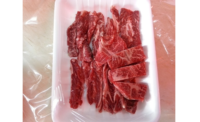Web exclusive
Natural-labeling litigation
Preparing for the next five years

The flurry of litigation initiated over “natural” food labeling began half a decade ago and entered a new stage this January, as the FDA declined an invitation from three federal courts to formally define the term “natural” on food and beverage labels. Despite the hopes of many in the industry, the FDA’s decision signifies that the meaning of the term likely will continue to be subject to interpretation and re-interpretation by courts in all 50 states and that the “natural” litigation tempest will continue unabated.
But after five years of lawsuits, and dozens of rulings (but, as of yet, not one trial), some predictability has emerged concerning the litigation risks surrounding the “natural” label. While many questions remain unanswered, there are concrete steps that food and beverage producers should take in evaluating and managing their litigation risk and several important litigation tools available if they do face litigation.
The “Natural” Litigation Phenomenon: 2009 - 2014
It’s the perfect litigation storm, fueled by the convergence of two powerful market forces, and permitted to grow through regulatory inaction.
No doubt, food production in the modern era has experienced a technological revolution with rapid developments in industrial-scale farming, mass-production and processing technologies, and bioengineering. Indeed, in the 20 years since they were first approved by the FDA, genetically modified (“GM”) foods have seen their share of the grocery aisles grow from zero to more than 70%.
But, as anyone who has recently walked down the same grocery aisles in recent years can tell you, there has been a “natural foods” counter-revolution in consumer demand. Health-conscious and environmentally concerned consumers increasingly demand food options that are less conventional—including foods that are certified organic, locally sourced, ecologically sustainable, without chemical additives or artificial ingredients, humanely raised, fresher, and more “authentic.”
Food and beverage producers have tried to meet those consumer demands in several ways, including participation in the USDA’s National Organic Program and investment in sustainable agricultural practices. But the most significant trend to meet this demand is the development of foods that can be marketed and labeled as “natural” because they lack synthetic ingredients and artificial preservatives—which became the second most commonly used labeling claim and accounted for annual sales exceeding $40 billion last year, according to one recent report. But “natural” can mean different things in different contexts. A “natural” label on a box of manufactured, mass-produced crackers or a soft drink does not necessarily convey the same meaning as it would on a bushel of tomatoes.
The FDA and other federal regulators would have been well suited to provide a bright-line, formal, regulatory definition of “natural.” Indeed, the FDA has adopted formal, precise definitions for other imprecise labeling terms, such as “healthy,” “low fat,” “healthy,” “light,” and “a good source.” But there is no formal, regulatory definition of “natural.” Instead, after the FTC passed on regulating the term in the 1980’s, the FDA and USDA have separately offered only informal guidance on the meaning of the term.
Click here to read the full article.
Looking for a reprint of this article?
From high-res PDFs to custom plaques, order your copy today!






